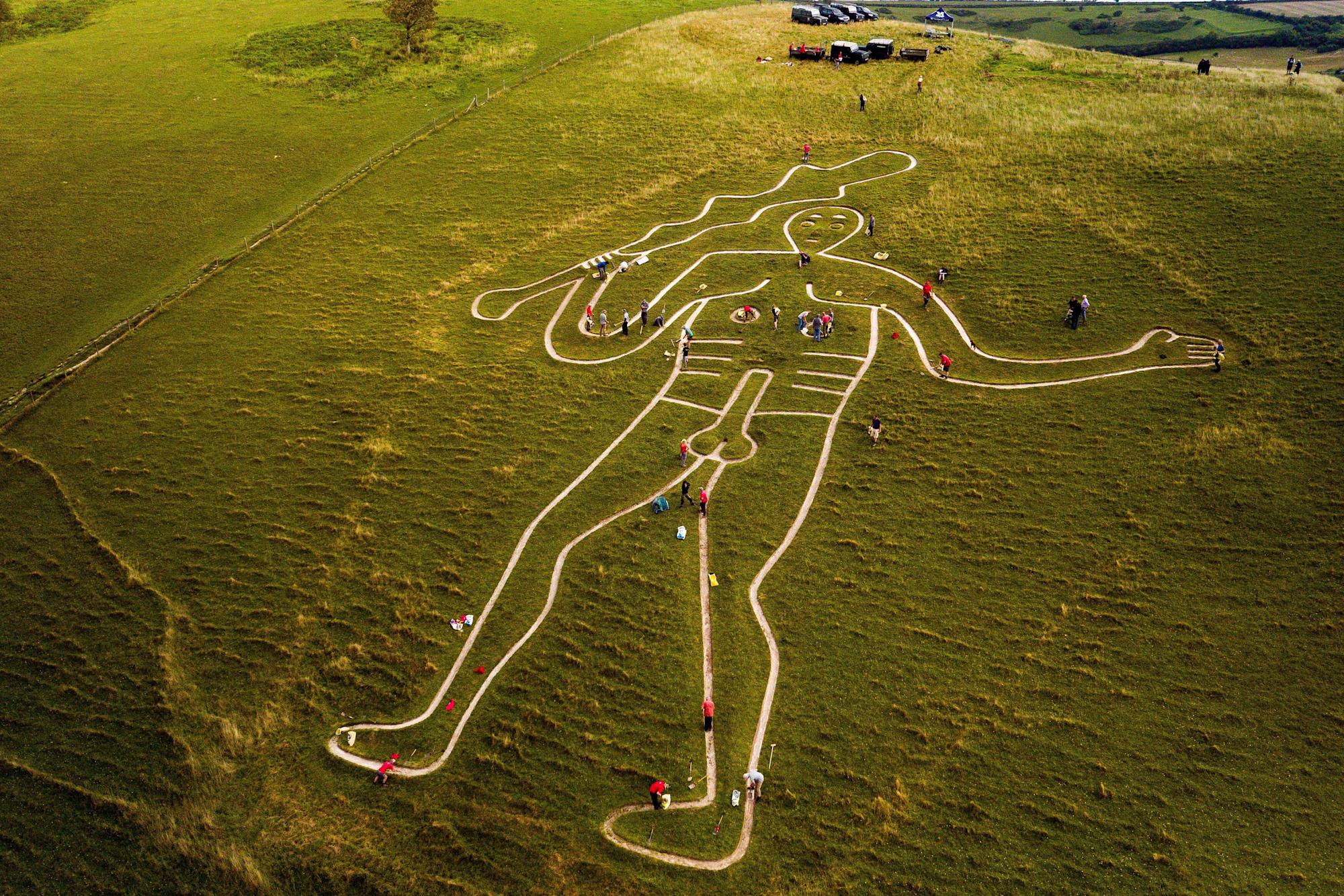This post may refer to COVID-19
To access official information about the coronavirus, access CDC - Centers for Disease Control and Prevention.

www.yahoo.com
Discovery About Naked Giant Carved Into English Hillside Arouses Scientists
Little was known about the well-endowed Cerne Abbas Giant in England … until now.
Science & Tech
Unraveling the mystery behind a very erect giant carved into a hillside has been hard, but a recent discovery is hopefully leading scientists closer to the naked truth.
The cartoonish ancient figure, known as the Cerne Abbas Giant, is sculpted into the chalk hillside above Cerne Abbas in Dorset, England. Basically, it’s big, it’s holding a club and it’s got a phenomenal phallus.
For centuries, people have speculated about the age and meaning of the giant hewn into the hillside.
“Many theories have surrounded the giant’s identity and origins, including ancient symbol of spirituality, likeness of the Greco-Roman hero Hercules, mockery of Oliver Cromwell and fertility aid,” the National Trust writes about the figure.
There’s even a theory that the figure was carved around the body of an actual giant who was slain by local townspeople.
In July 2020, the BBC reported that scientists had extracted soil samples from the giant to determine its age, but the results were delayed due to the coronavirus pandemic.
However, the scientists did find “microscopic snails in the sediment samples,” which “included species that were introduced into Britain in the medieval period,” meaning the giant was unlikely to be prehistoric.
Last week, the National Trust finally revealed that the giant was probably first created in the late Saxon period.
The team of archaeologists told The Washington Post that the carving was most likely made in A.D. 908.
“Every archaeologist I know, including me, had it wrong,” Michael Allen, an independent geoarchaeologist and leading expert on ancient mollusks who participated in the dig, told the Post.
Most experts thought the giant was way older or younger than it actually is, he said.
The giant may have been a medieval creation, but for some unknown reason, it “became grassed over and was forgotten,” National Trust senior archaeologist Martin Papworth said in the National Trust’s press release.
“But at some stage, in low sunlight, people saw that figure on the hill and decided to re-cut him again,” Papworth said.
And although Allen told the Post that nailing down the giant’s possible age is “exciting,” it also raises more questions.
“It turns out we don’t know everything,” Allen told the Post.
The National Trust says the recent discoveries place the giant’s origin “in a dramatic part of Cerne history.”
“Nearby Cerne Abbey was founded in 987 A.D. and some sources think the abbey was set up to convert the locals from the worship of an early Anglo Saxon god known as ‘Heil’ or ‘Helith,’” the press release states.
“The early part of our date range does invite the question, was the giant originally a depiction of that god?”
Scientists are unsure, but Alison Sheridan, a freelance archaeological consultant based in Edinburgh, told the New Scientist she has a theory.
“It would almost seem to be an act of resistance by local people to create this fantastically rude pagan image on the hillside,” Sheridan said, adding:
“It’s like a big two fingers to the abbey.”
























































